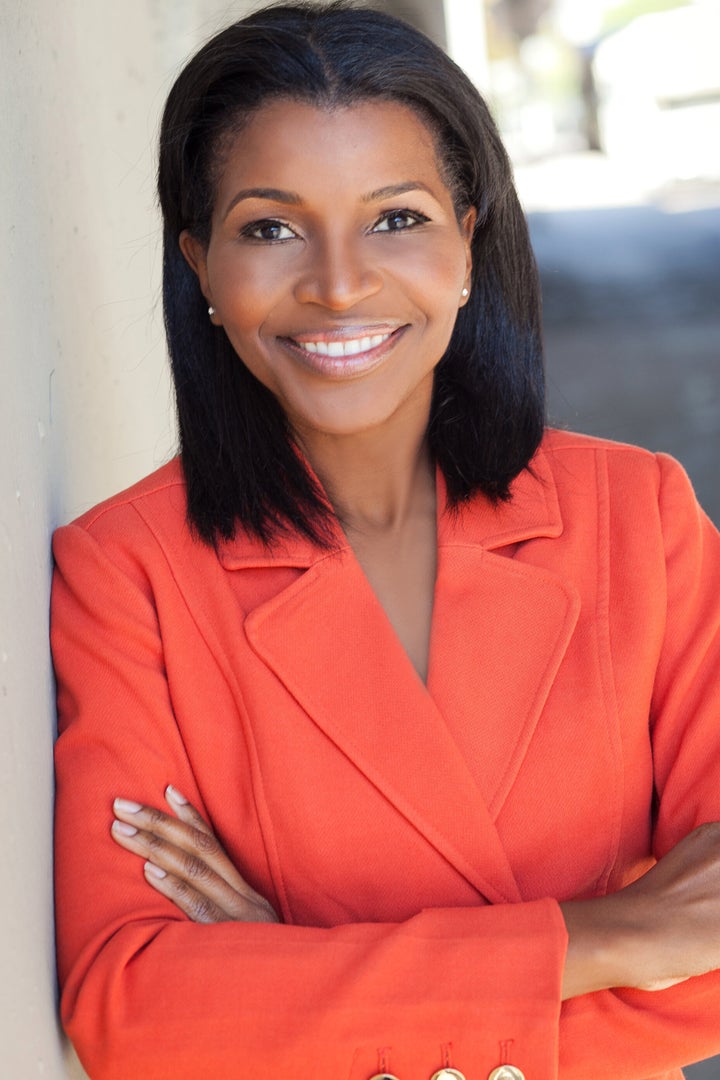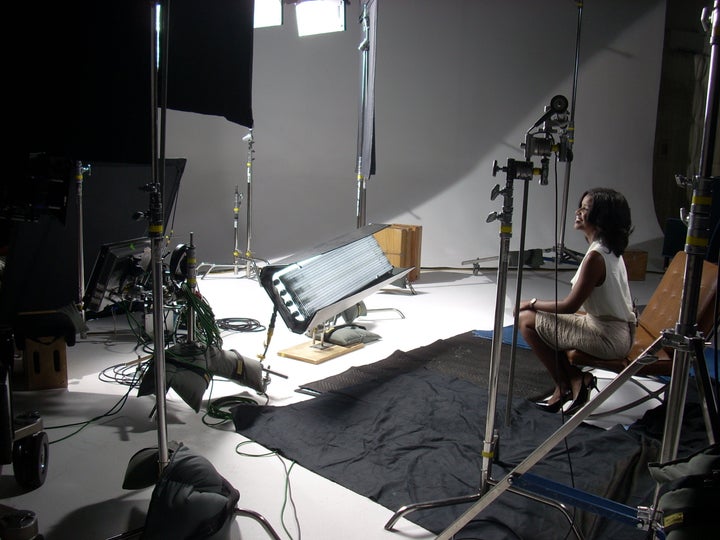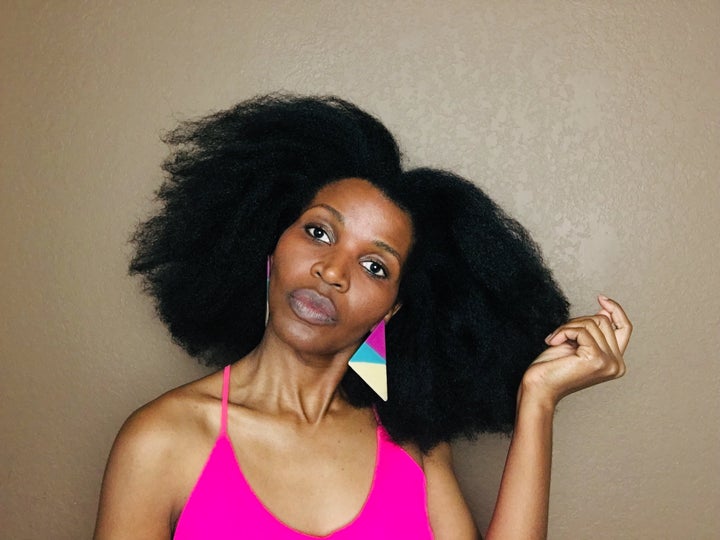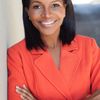
In high school, I wasn’t that girl — the pretty, popular girl whom all the guys liked. I was that other girl — the smart, glasses-wearing girl who was voted Teacher’s Pet and Most Likely to Succeed. Anyone could be beautiful, I told myself. Stellar grades, however, are earned.
In college, I read authors like bell hooks, and proudly labeled myself “feminist” and then “womanist.” New questions swirled in my head: Why are women valued more for their looks than for anything else? How had women’s physical bodies become lucrative commodities? I left my graduation ceremony clutching my degree — a B.A. in Media Studies with a focus on representations of women and people of color — ready to clobber The Man.
Eight years, three jobs, and two careers later, I was at a standstill and needed direction. I told myself that I would do whatever came to mind, no matter how zany. The answer came on a January afternoon as I laid in a near vegetative state on my couch. There, I heard a familiar voice.
It was the same voice that led me to spend a year traveling as a motivational speaker, landing my 18-year-old self in the beautiful Australian countryside near Sydney. It was the same voice that had encouraged my 21-year-old self to turn down a job at NBC and instead work as a university chaplain. The voice had been right ― being a collegiate chaplain enabled me to make a deeper impact in people’s lives than being an NBC Page ever could. The voice was always right, and on that winter afternoon, it whispered, You should be a model.
I was 30 years old.
I laughed out loud, for I had neither the desire nor the gall to try to become a model. Doing so would mean that I thought that I was beautiful. I didn’t, despite having brushed aside compliments since shedding my bifocals at age 17. And even if I did, the modeling industry might disagree, due to my 5-foot-5-inch frame and the troop of gray hairs that had set up camp on my head.
Did I want to risk becoming a person people laugh at because her aspirations are clearly out of her reach? Like the rejected, abysmal-sounding “American Idol” contestant who assures the judges that she will prove them wrong when she has a number one single on iTunes?
I turned to Google for answers. My search revealed there were different types of models: High fashion models are at least 5-foot-8-inch twiggy young women — typically under age 25 — who model designer clothes the average American could never afford. Commercial models, by contrast, are everyday people who have great smiles but vary in height and age. They model shoes, makeup, clothing — common products you see advertised on TV, online and in catalogs. I’d heard that I have a great smile for most of my life. Maybe I had a chance.
Two days later, an online ad caught my attention: “We are looking for women of all ages, sizes and ethnicities for a handbag advertising campaign. It is as simple as submitting a picture of yourself, and you may be chosen for a full page ad in an L.A. based magazine!”
I shyly submitted my photo, and the company invited me to audition the very next day. A torrent of reasons not to go flooded my psyche: I was tired, and I had a nice little black scab right in the middle of my forehead, commemorating where my hairstylist sister had burned me days before while pressing my hair. Plus, chances are they won’t pick me anyway… I stopped myself. How could I pursue a career as a model if I didn’t believe that anyone would ever select me?
I couldn’t.
So I took a deep breath, said a short prayer for courage, and leapt to my bedroom. I grabbed my most stylish hat — I was going to need it — and I built an outfit around it.
The company’s office, made entirely of glass, could have been featured in an issue of Architectural Digest. It was as chic and modern as the handbags it housed. After 30 agonizing minutes of comparing myself to every model seated in the lobby, I was called in to meet the casting director. “Pose with this handbag in three ways.” I posed one, two, three times.
She called the next evening. “You’re in. Your fitting is tomorrow.”
Really?!
Two days later, I was posing on Hollywood’s famous Melrose Avenue with a Junior Drake handbag, being photographed by an “America’s Next Top Model” photographer. Three weeks later, I was lounging on my couch again, this time looking at myself in a two-page spread in the Los Angeles Times Magazine.
How cool.

Commercial modeling demanded that I be on call nearly constantly. I might receive an audition notice for the following day or even the same day, which meant I had to stay meticulously groomed and ready for an audition: perfect hair; arched eyebrows; high heels in my car — just in case.
Every day was different. Some days I spent grooming myself at the nail and hair salon (aka my sister’s apartment). Other days I worked my part-time survival job — I mean, I wasn’t making Tyra Banks bank.
Sometimes I was paid just in free products, but other jobs paid several thousand dollars — even tens of thousands. Audition days required me to traverse bumper-to-bumper L.A. traffic to have a casting director literally look my body up and down or walk up to me and stare into my pores to examine my skin.
If I wasn’t working or auditioning, I sat at home and watched “America’s Next Top Model” for tips. I learned that I was always to arrive on set with my hands and feet well manicured, but devoid of polish so my body could be a “blank canvas.” I was to avoid wearing bra straps or anything that would leave an impression — just in case I needed to show that body part. I learned how to tell a story with my body without using words. And I came to appreciate modeling as both a language and an art form: It wasn’t solely about being “pretty,” but knowing how to use your face and body to emote and evoke.
Shoot days were as fun and glamorous as you would imagine: celebrity treatment complete with stylist fittings and hours-long hair and makeup sessions. But I wrestled internally with my new career.
For one, I was lying — about my age and my height.
“How tall are you?,” a casting director asked pointedly during one audition.
“Around 5-foot-6-inches,” I replied.
“Five-foot-5,” he said, writing down my real height. I knew that I was perfect for this gig, even if I was two inches shy of the minimum 5-foot-7-inch height requirement. It was a spokes-modeling audition — meaning I’d have to talk about the product — and I knew from my experience as a motivational speaker that I could do the job with warmth, charm and intelligence. And even if I wasn’t perfect for the project, I was determined to vie for it, because it would provide me an income for five months.
After the audition, the casting director and producers asked me to exit the room — so they could talk about me — but then invited me back. “They really like you,” the casting assistant whispered in my ear as she opened the door for me to reenter the room.
I don’t remember what happened during that second conversation, but I do remember that I didn’t get the job and that I cried for a week.
I cried because I didn’t get the gig and because I was tired of pretending. I could neither add inches to nor subtract years from my body. If I was going to maintain my sanity in an industry that constantly critiqued my body, I had to accept the truth about my aging body’s imperfections: my short frame; my graying locks; the polka dots on my legs from a childhood bout of chicken pox; my disproportionately large thighs; and the prominent stretch marks on those thighs — despite never having experienced the joy of bearing a child.

As the year progressed, my zany 30-year-old self’s experiment collided with my idealistic 21-year-old self’s ideals. Was I content to co-create images that enticed women to participate in superfluous consumerism? Was I comfortable participating in an industry that commodifies women’s bodies?
As I found myself on photo shoots with male models, I gave myself permission to not have to fully understand the complexities of how objectification and commercialism intersect with the representations of women’s bodies in the media. Modeling side by side with men — none of us scantily clad and all of us the camera’s subjects — I perceived no inequality.
If a man could model without criticism, then why couldn’t I? Did my mere participation in this industry make me a co-conspirator in women’s oppression, even if I was modeling for a shoe store, and not Victoria’s Secret? Was the very concept of modeling inherently flawed, or just the modeling industry’s narrow ideals about who could be models?
In college the answers had seemed so clear, but now things were murkier.
Conversations with my best friends (two doctors) intensified my dilemma. They shared stories about operating on hemorrhaging women and saving their unborn children. I told stories about fake eyelashes that turned my eyes bloodshot. The differences were striking: My friends were saving lives. I was grooming my hair.
I was no longer a motivational speaker or a minister of the gospel. And my life-long dream of making a difference with my words, like Oprah, felt forgotten and discarded, like last season’s fashions.
I decided to stop modeling by the end of the year, but not before my brief career gave me an unexpected gift. Despite its deep-seated issues, modeling brought me its own form of redemption. With each camera click, I became increasingly secure with my physical being — with the parts society said were beautiful and with what it deemed flawed. I learned to adore my body, as is.
Evidence of my breakthrough surfaced at a friend’s party at the end of the year. I stood confidently in a simple black dress and minimal makeup. A man approached me, smiling.“You’re beautiful,” he said.“You look like a model.”
“Why, thank you,” I replied, and walked away.
Do you have a compelling personal story you’d like to see published on HuffPost? Find out what we’re looking for here and send us a pitch!
